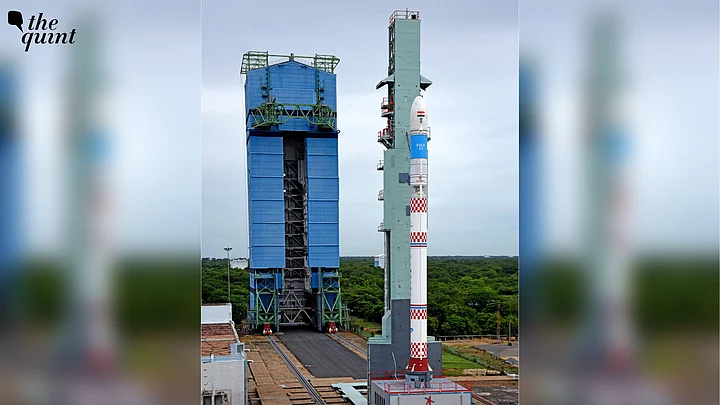While the maiden flight of the Indian Space Research Organisation's (ISRO) Small Satellite Launch Vehicle (SSLV) was completed successfully on Sunday, 7 August, the space agency issued a statement that the two satellites onboard were placed in an incorrect orbit and are "no longer usable."
The ISRO tweeted, "SSLV-D1 placed the satellites into 356 km x 76 km elliptical orbit instead of 356 km circular orbit. Satellites are no longer usable. Issue is reasonably identified. Failure of a logic to identify a sensor failure and go for a salvage action caused the deviation. A committee would analyse and recommend. With the implementation of the recommendations, ISRO will come back soon with SSLV-D2."
The space agency said that its Chairman Dr Madhavan Nair would release a detailed statement soon.
SSLV-D1, ISRO's smallest rocket, lifted off from the Satish Dhawan Space Centre in Sriharikota on Sunday morning, carrying an earth observation satellite (EOS-02) and a student satellite (AzaadiSAT) built by 750 school girls to mark the 75th Anniversary of India's independence.
Earlier the same day, the ISRO said that while all stages performed as expected, data loss was observed during the terminal stage. It is being analysed and its impact on the launch is yet to be confirmed.
Dubbing the mission as a complex one, former ISRO chairman Dr Madhavan Nair told NDTV that the preliminary findings are expected in "few hours."
"Thousands of pages of data will be pouring in. Several specialists will have to go through these data. Apparently, everything went well up to the third stage. There is some deviation in the path in the final phase of the launch and that could be one reason or otherwise there could be some anomaly during separation," he said.
SSLV To Cater to Satellites Under 500 kg
The SSLV was developed to cater to the launch of satellites weighing up to 500 kg to Low Earth Orbits on a ‘launch-on-demand’ basis.
It is 34 m tall, about 10 m less than the PSLV with a diameter of two metres as compared to 2.8 metres of PSLV. It also has a lift-off mass of 120 tonne compared to PSLV's 320 tonne, which can carry payloads up to 1,800 kg.
EOS-02 is an earth observation satellite designed and realised by the ISRO. This microsat series satellite offers advanced optical remote sensing operating in an infra-red band with high spatial resolution.
AzaadiSAT is an 8U Cubesat weighing around 8 kg. It carries 75 different payloads each weighing around 50 grams and conducts femto-experiments.
(With inputs from NDTV.)
(At The Quint, we question everything. Play an active role in shaping our journalism by becoming a member today.)
